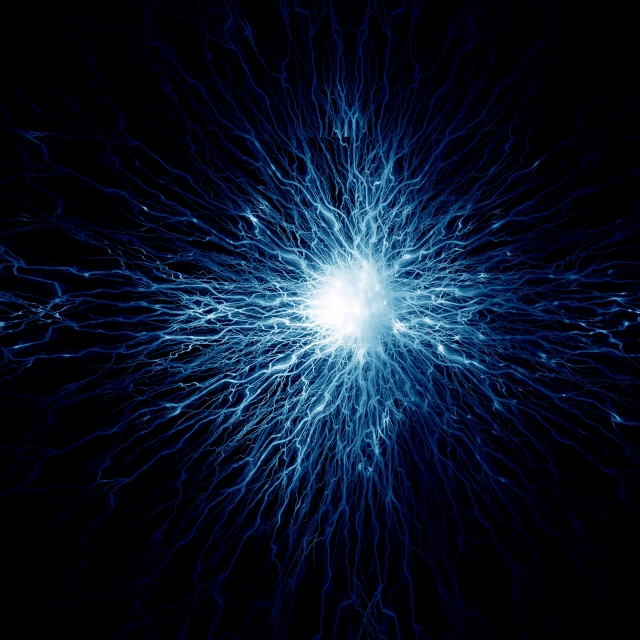It began as an idle thought. I stood on a chill dimly-lit platform one early winter morning, waiting on my regular, no-doubt delayed train to emerge from the tunnel and pull up with a screech of brakes, ready to convey me through the snow-topped hills from the grey, snowy city where I live to the dark, damp city where I worked. With nothing better to do, my brain turned in on itself, and asked: what’s it like to be a spike?
You see, your brain uses electricity to communicate, its neurons talking to each other by sending tiny blips of voltage down a gossamer thin cable. We neuroscientists call that blip “the spike”. And as spikes are how neurons communicate, they are how you do anything: talk, eat, and run; see, plan, and decide. So understanding the brain means understanding spikes, for they are the brain’s own language.
Like all neuroscientists studying these spikes, I look at them from afar. Extraordinarily sensitive recording devices let tireless experimenters record these spikes from neurons in the brains of living, moving animals. We see them as dots on a screen, blips on an oscilloscope. We sketch pictures of where in the brain they came from, and where they are going. We draw graphs that relate how many spikes happened in a bit of a mouse’s brain to what the mouse was seeing at the time: sometimes it is looking at a black bar; sometimes we sit that mouse in a little mouse cinema and show it The Matrix. We doodle maths that encapsulates theories for what those spikes are coding about the world, and type out code that simulates how neurons make those spikes. All distant views of a spike, not of what it’s like to be one traversing the brain. Could we learn more by putting ourselves where the spike is, I wondered?
And then it occurred to me that, now, we can. We are in a golden age of neuroscience, in the white heat of a technological arms race. A race to record as many spikes from as many neurons at the same time as possible. And to do so in moving, behaving animals, so we may relate those spikes to what the animal was seeing, hearing, smelling, deciding, and doing. For after all, the reasoning goes, if spikes are what we need to understand the brain, then surely we need to capture as many as we can.
But we also need to know where those spikes go. For otherwise we do not know where their message is being sent. That has driven a race to trace the wires of as many neurons as possible, to know where each neuron sends its spikes: to its neighbours, to its cousins in other regions of the brain, and to distant lands, the other side of the brain.
When they are sent and where they are sent tells us a lot about spikes. But the key information in any science is causality - what causes what? That has driven a race to precisely control those neurons, to turn spikes on and off with light, the technology of optogenetics where light-sensitive proteins, originally from weird, niche species of bacteria, are genetically inserted into neurons so we may, literally, control them with light.
With all that, with the spikes, and the wiring, and the causality, we can finally know something of what it’s like to be a spike.
So what is it like to be a spike? It is a brief life, measured in milliseconds. It is a rare life, for most neurons make no spikes for most of their own existence. For all that, it is a raucous life, for the 17 billion neurons in your cortex together send about 17 billion spikes each second. Yet it is most likely a frustrated life, for most spikes are destined to fail. Their goal is to communicate their message to the thousands of neurons contacted by the neuron that created them. But when most reach a junction from their host neuron to the next neuron along, nothing happens. They fail; their message is lost.
Most of all, we’ve learnt the life of a spike on its own is meaningless. We’ve spent nearly a century squabbling over how the spikes from one neuron carry messages about the world, about what is out there, or about what is about to happen. But our golden-age technology is showing us that we were having the wrong argument. One spike is not the sole carrier of a message; one neuron not the only sender of information. If most neurons send spikes only sporadically, if most spikes fail, if brains can go right on operating when we lose thousands of neurons per day, then a single spike or a single neuron cannot be the conveyor of meaning. No, the language of the brain is spoken by a legion of spikes sent together, from many neurons. Now we can record from so many neurons, we find that the sights and sounds, the thoughts and plans, the reaches and runs are encoded in spikes spread across them, in the roar of many neurons.
And that is the story I tell in The Spike: An Epic Journey Through the Brain in 2.1 Seconds, the life of a spike in all its intimate details, the simple pulse that underpins all you do, my idle thought no longer.
Mark Humphries is Chair in Computational Neuroscience at the University of Nottingham. He is the founding editor of The Spike, a Medium online publication. He lives in Sheffield, England. Twitter @markdhumphries | Lab | Public Blog

